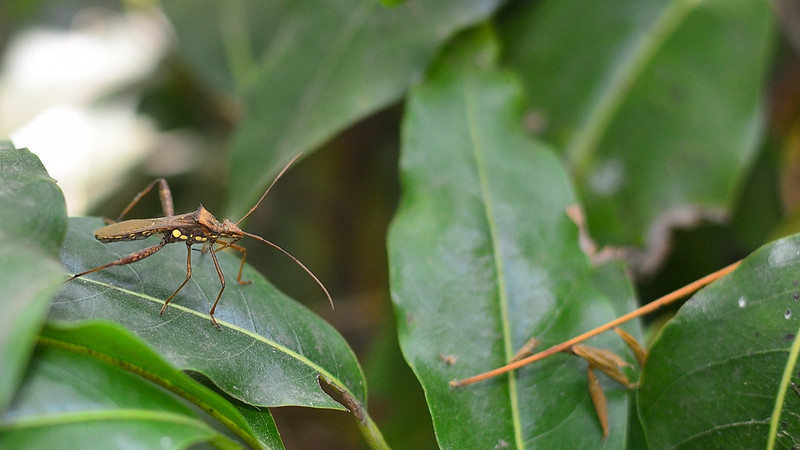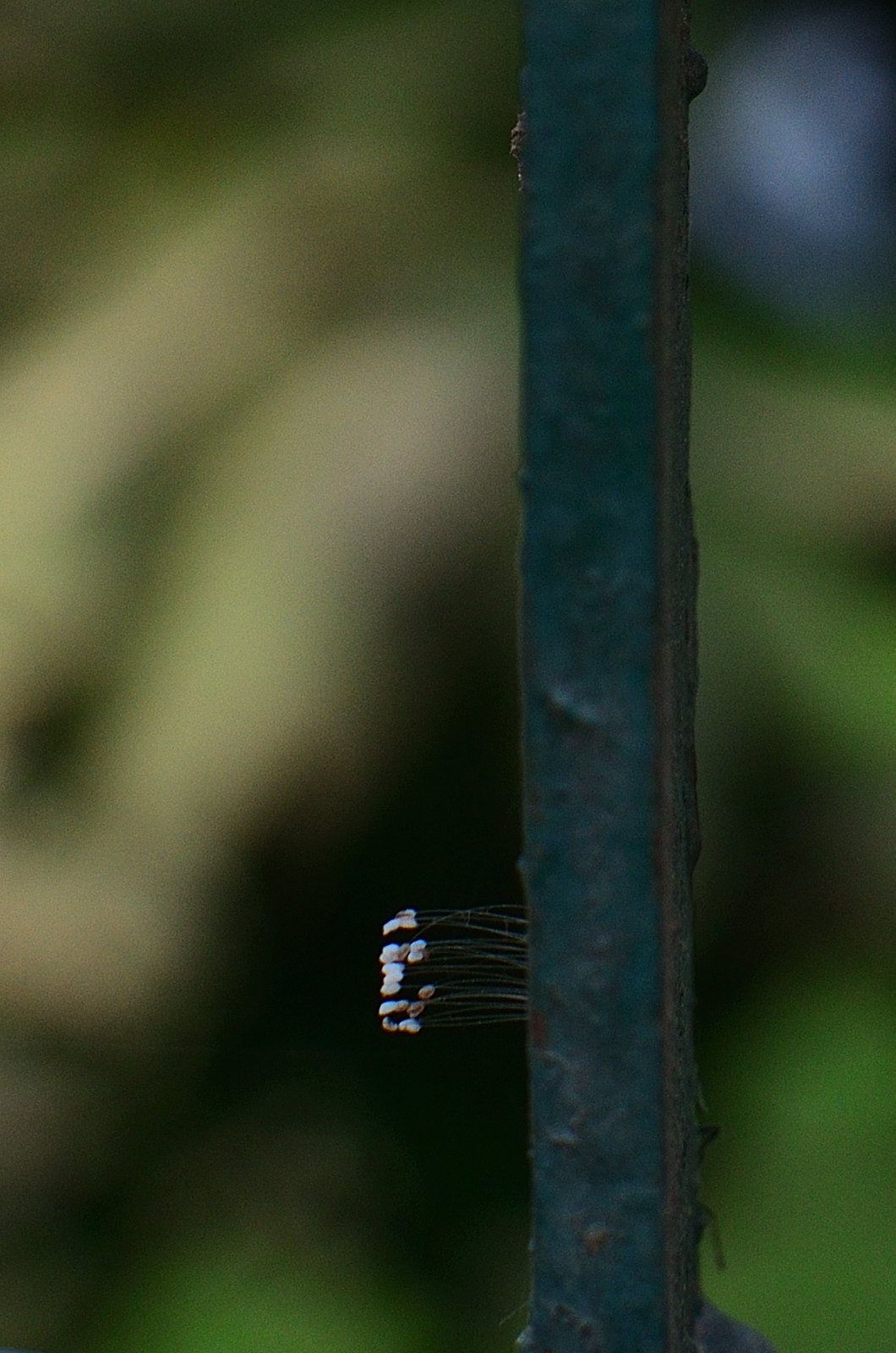The Bangalore bird race 2020 arrived and as usual, I contacted Ratnesh of aarohi and we formed 4 teams and all set for the race. For those who are not aware, it's an opportunity to see as many birds as we can from 6 am to 6 pm around Bangalore and meet in the evening and check each others findings. We registered as green team like we did from past 4 years. This meant we need to use public transport for commuting.
We chose IISc as our birding place, thanks to my friend Shuba bhat who is an excellent birder who lives in IISc. Like last year, this year too she helped us in getting permission to bird inside the campus. We all met at Shivajinagar bus stand, took a bus to IISc, where we met few other team members. At around 7:00, we started birding. My friend subbu joined us despite of recovering from sickness and helped us with the walk.
The first bird besides crow was a surprising Indian Paradise Flycatcher. It evaded few of us, but most of us saw it and kids who saw it for the first time were super thrilled. We saw barbets, parakeets and black kites. We had a quick breakfast and headed to the swimming pool and past the wild path to the lake where Shubha met us briefly and gave us some goodies. Unliek last year she couldn't join us as she has some other work. The lake was hotspot as we saw the verditer flycathers and tickell's blue flycatchers besides a grey wagtail and white-breasted kingfisher. We sat at rock listening to birds, watched them have bath at bird bath.
We saw booted eagle from close and discussed about brid behavior including sunbird and woodpeckers feeding behavior. We spotted some chestnut-tailed starlings and both variety of mynas and could see the differences between the two. A brown shrike briefly turned up and disappeared along with some yellow-billed babblers. We munched further on more snacks as well as the karachi biscuits.
Moving on, we saw few Coppersmith barbets nesting. We also spotted Ashy drongo. By then it's well past 10:30 and birding activity dwindled. We walked back to the canteen and have a good lunch. Near the canteen we spotted the big wasp nest too. Those who can't eat food , "sold" food to others in the team to ensure no wastage happened and we walked to Sankey tank.
I chose Sankey tank as it's close-by and on internet it shows open from 6 am to 6 pm. However reality turned out that it opens at 4:00 PM. We had 2 hours to wait and we birded from outside and went to other gate to find same answer and despite of our requests for brid survey, we were not let in. While walking on the tank, we noticed the creeper fig Ficus pumila which stuck to the walk so strongly. Few of us discussed characteristics to identify a fig. We also saw this colorful flowers, which google helped to identify as Paper mulberry
Seems like it has male and female plants. So not sure if this gets pollinated or not. It's a bright and colorful fruit.
We decided to move to Hebbal lake and try our luck. Turns out, we walked a km to the bus stop and caught a bus to Hebbal lake. We were surprised to know that the lake is open through the day (unlike Sankey). We realized how these days all lakes were fenced, had security and had restricted entrance making life difficult for birders who want to survey them at mid-day.
At Hebbal lake, we spotted some egrets and not many bird actively feeding. There are few on the far island which are difficult for children to spot with binoculars. However we saw some grey hornbills flying past on the other bank that brought some solace.
We headed back and it's surprising to see young children still having energy despite of walking 12-14 kilometres. The day ended with talk by Dr.Subrahmanya.S on his re-survey of Salim ali Mysore state survey. We had a good dinner and headed back home.
We chose IISc as our birding place, thanks to my friend Shuba bhat who is an excellent birder who lives in IISc. Like last year, this year too she helped us in getting permission to bird inside the campus. We all met at Shivajinagar bus stand, took a bus to IISc, where we met few other team members. At around 7:00, we started birding. My friend subbu joined us despite of recovering from sickness and helped us with the walk.
The first bird besides crow was a surprising Indian Paradise Flycatcher. It evaded few of us, but most of us saw it and kids who saw it for the first time were super thrilled. We saw barbets, parakeets and black kites. We had a quick breakfast and headed to the swimming pool and past the wild path to the lake where Shubha met us briefly and gave us some goodies. Unliek last year she couldn't join us as she has some other work. The lake was hotspot as we saw the verditer flycathers and tickell's blue flycatchers besides a grey wagtail and white-breasted kingfisher. We sat at rock listening to birds, watched them have bath at bird bath.
We saw booted eagle from close and discussed about brid behavior including sunbird and woodpeckers feeding behavior. We spotted some chestnut-tailed starlings and both variety of mynas and could see the differences between the two. A brown shrike briefly turned up and disappeared along with some yellow-billed babblers. We munched further on more snacks as well as the karachi biscuits.
Moving on, we saw few Coppersmith barbets nesting. We also spotted Ashy drongo. By then it's well past 10:30 and birding activity dwindled. We walked back to the canteen and have a good lunch. Near the canteen we spotted the big wasp nest too. Those who can't eat food , "sold" food to others in the team to ensure no wastage happened and we walked to Sankey tank.
I chose Sankey tank as it's close-by and on internet it shows open from 6 am to 6 pm. However reality turned out that it opens at 4:00 PM. We had 2 hours to wait and we birded from outside and went to other gate to find same answer and despite of our requests for brid survey, we were not let in. While walking on the tank, we noticed the creeper fig Ficus pumila which stuck to the walk so strongly. Few of us discussed characteristics to identify a fig. We also saw this colorful flowers, which google helped to identify as Paper mulberry
Seems like it has male and female plants. So not sure if this gets pollinated or not. It's a bright and colorful fruit.
We decided to move to Hebbal lake and try our luck. Turns out, we walked a km to the bus stop and caught a bus to Hebbal lake. We were surprised to know that the lake is open through the day (unlike Sankey). We realized how these days all lakes were fenced, had security and had restricted entrance making life difficult for birders who want to survey them at mid-day.
At Hebbal lake, we spotted some egrets and not many bird actively feeding. There are few on the far island which are difficult for children to spot with binoculars. However we saw some grey hornbills flying past on the other bank that brought some solace.
We headed back and it's surprising to see young children still having energy despite of walking 12-14 kilometres. The day ended with talk by Dr.Subrahmanya.S on his re-survey of Salim ali Mysore state survey. We had a good dinner and headed back home.




















